With better manners, he’d be head of his class.
Over the course of a career spanning the late 1920s to the early 1960s, Japanese auteur Yasujiro Ozu released 54 films. Of those, 17, nearly one-third, are irretrievably lost and a pair exist only in fragments. Of the films that remain, another 17 have now been released in the United States through Janus Films and the Criterion Collection. That number was just attained last week when Criterion issued a lovingly crafted box set of two films: The Only Son and There Was a Father. This news, combined with our recent podcast focused on Floating Weeds and the in-depth Ozu retrospective series by Moises Chiullan in his Arthouse Cowboy column over at Hollywood-Elsewhere.com, have made Ozu a frequent topic of conversation on this site and in the online community of Criterion and cinema fans over the past few weeks. So now seems as fitting a time as any to add my thoughts to the mix by taking a look at one of the titles in Eclipse Series 10: Silent Ozu – Three Family Comedies. I’ve chosen Passing Fancy (1933), chronologically the last of the three in this set, which places it right before A Story of Floating Weeds (1934), the last domestically available Ozu silent, which in turn precedes The Only Son (1936), for those interested in placing all this Ozu chatter into a manageable timeline!

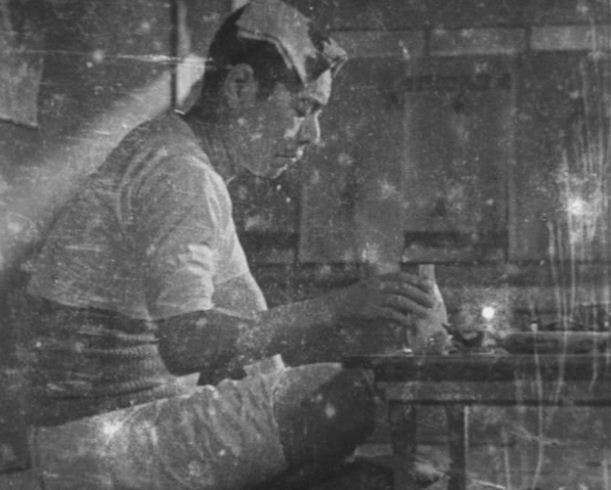
The pathway to becoming an Ozu aficionado seems fairly well marked. Typically, a novice to the work of the great director will first learn about his work by coming into contact with the lofty reputation of one of his so-called Noriko Trilogy films: Late Spring, Early Summer or most prominently, Tokyo Story. Let’s call that Stage 1 of the Ozu Initiation. After making casual acquaintance with the Master, the neophyte may be deemed worthy to advance to an apprentice phase, Stage 2, where one learns about other of his later works like Floating Weeds, Good Morning or An Autumn Afternoon. These exquisite relics from the later chapters of Ozu’s oeuvre often prove sufficient for many of his admirers, but as with any other esoteric disciplines, there are further levels of ascendancy to attain, should one be daring and resolute enough to brave the journey.
For as we see, there is an earlier realm to explore, which I’ll call Stage 3, the level I’m currently at, where one becomes adept at understanding and appreciating the wordless spells that Ozu is capable of weaving. My ambition here is to help Stage 2 apprentices take that next step, with the understanding that there are others more advanced than I, acolytes of Stages 4, 5 or beyond: disciples like Moises Chiullan and Michael Kerpan who have rigorously tracked down and viewed every last scrap of film that emerged from Ozu’s camera – and I will only utter the names of Tony Rayns and Donald Ritchie in a hushed, reverential tone, for they have trod in the Master’s footsteps, ascending to heights of Ozu-satori that induce dizziness at the merest contemplation.
Setting aside then the prospects of accomplishments quite likely beyond our grasp, let’s return our gaze to the object before us: Passing Fancy, Ozu’s affecting comedy about single fatherhood and the perennial masculine resistance to growing up gracefully. The first hurdle that most of us face in entering this world, and the others evoked in the Silent Ozu box set, is that the film is, indeed, silent. Unlike most of the other silent films featured in the Criterion Collection, Passing Fancy offers only two audio options – a lilting piano score, composed by noted silent film composer Donald Sosin in the spirit of Ozu but not what the original audiences were likely to hear, or nothing. There’s no audio commentary (since Eclipse discs are bare bones) or more elaborate selection of soundtracks such as one would find on The Passion of Joan of Arc or Pandora’s Box DVDs. This lack of audible stimulation requires a bit of work for many of us, but stick with it. I recommend the piano track for beginners. But go ahead and give it a try without sound for a second viewing, after you’ve gotten to know the characters and story line. The silence has a way of drawing our attention further in, once we learn to discern the subtleties it reveals.
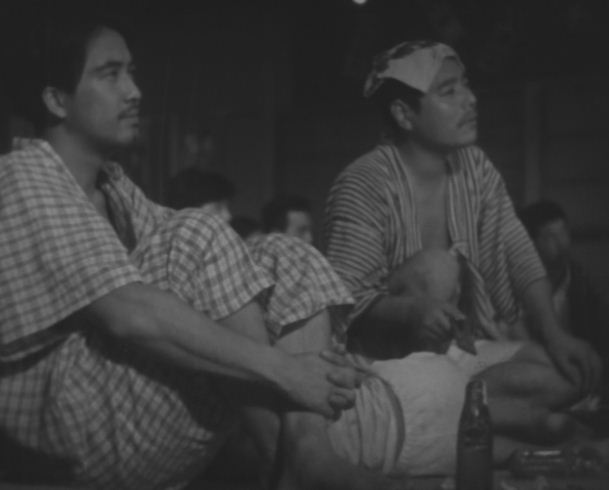
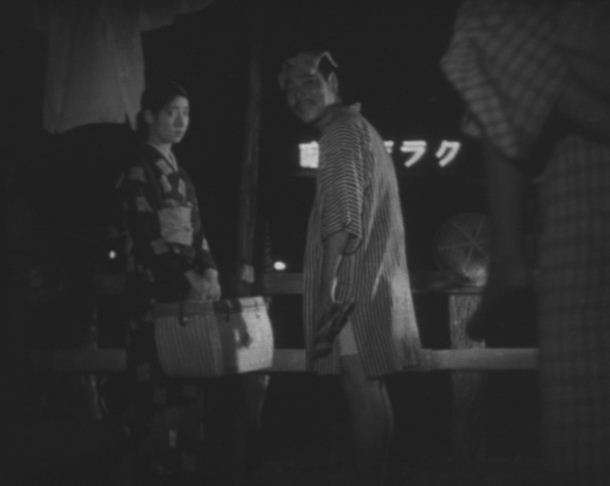
A second obstacle is that these old films carry their scars. Just the fact that roughly a third of Ozu’s films no longer exist says a lot. Even though he was a highly successful film maker in the postwar years, conditions were tough, the esteem of old movies was so low and preservation was such a low priority that little could be done to restore his early works. The images of Passing Fancy show a lot of damage – it seems likely that for certain scenes, the reel they used for the transfer must be the only one in existence for that particular segment. But the sheer rarity often enhances our respect and even awe that these films have survived the ravages of time.
The story itself is fairly unprepossessing. Kihachi is a single father, and it’s never made clear what happened to the mother. There’s a brief mention of his ‘ex’ by his friend and neighbor Jiro. Other reviews give the opinion that Kihachi is a widower, so I’m not sure. But he has a son, Tomio, who we first see laying sacked out on the floor of a local working-class music hall. Kihachi keeps time by tapping out the beat on Tomio’s rear end, a small indicator of his oblivious disregard of parental duties. He’s there for a night’s entertainment and the opening scene wins us over with some simple physical comedy involving a misplaced coin purse and antagonistic fleas. From there, Kihachi and Jiro continue on for a night of drinking, and we get the sense that it’s late, that Tomio is being lugged along like so much excess baggage and that Kihachi is not doing a very good job of looking after his kid, who’s got some kind of eye problem and obviously needs his rest.
Into the drunken gaze of the drinking buddies wanders Harue, a young woman just let go from her factory job and now without a place to stay. Kihachi looks her over, noticing that she’s pretty enough to suit his tastes. ‘I have a kid, but no wife!’ he blurts out, briefly losing contact with propriety, but Jiro is there to bring him back in line. Jiro is skeptical of Harue’s story, sizing her up as a troublemaker bent on taking advantage of vulnerable men. Kihachi, characteristically wavering as he does throughout the film, can’t follow Jiro’s impulse to just leave Harue to fend for herself. So a night’s lodging with Otome, matron of the local inn, is arranged for Harue and the men stagger home, Tomio in tow.

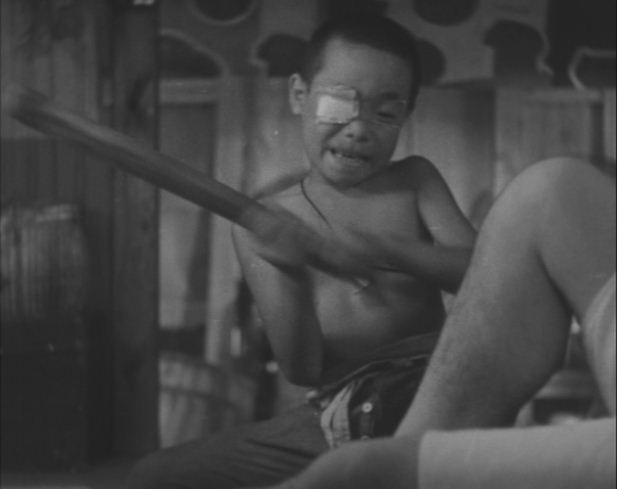
Ozu cuts directly to a nicely composed shot of a young hand skillfully drawing the face of an alarm clock – it’s Tomio’s work, and we see that this neglected boy has some native talent. We’ve jumped to the following morning, and Tomio notices that it’s well past time for his dad to wake up and get to his job at a nearby brewery. But Kihachi is under his nets, sleeping off last night’s alcoholic stupor. The usual methods of rousing him don’t work, so Tomio resorts to the old reliable ‘whack the shin’ method to wake both his old man and Jiro from their slumber. These comical bits establish quite a bit regarding the functionality of the household and the essential likeability of the central characters. Even though Kihachi is a scoundrel, Tomio is a brat and Jiro has a hard-bitten cynical side to him, it’s hard to not feel affection for them and empathy for their plight.
Kihachi in particular, in all of his various ‘passing fancies,’ holds our attention as he gradually comes to recognize his inadequacies, first as a lover in his futile and funny efforts to woo Harue, and later as a father who takes way too much for granted regarding Tomio’s ability to roll with the punches brought about by his poverty, his drinking, his lack of education and his foolish pursuit of a woman half his age. Like many (dare I say most?) guys, Kihachi is not above resorting to a bit of scammery and double-talk to buy himself some time when facing pressure, nor is he immune to self-deceiving flatteries if it helps him to ignore the long-shot odds of success. He’s a lot more show than substance, but the way he goes about it – dressing up in his finest white gown and ‘breaking the bank’ on an ornamental comb gift in his pursuit of Harue – can’t help but make us laugh as we recall other versions of that guy we’ve seen (or been) in our own lives.
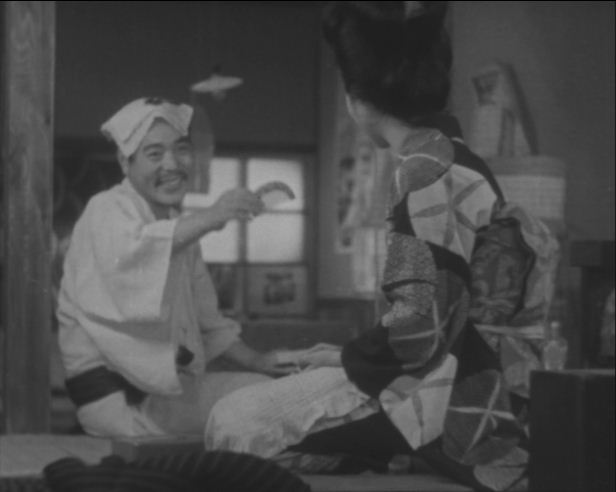

Besides Kihachi’s misguided attempts at romance, the father-son relationship between himself and Tomio provides Passing Fancy‘s moral center of gravity. As is often the case with emotionally immature single dads and their only sons, the bond degrades a bit to blur the boundaries between parent and child. Tomio is the one growing up too fast, put in the position of having to defend his dad against the ridicule of his peers while also coping with his own disappointments and frustrations. Kihachi and Tomio often resort to smacking each other, and though it’s comical at first, it erupts into a more heart-wrenching episode halfway through the movie, after Tomio has destroyed Kihachi’s prized bonsai gingko plant in a fit of frustration..
The outburst proves somewhat cathartic, restoring a brief equilibrium, before matters turn much more serious in Passing Fancy‘s third act. An impulsive act of generosity and showmanship on Kihachi’s part leads to an illness that threatens Tomio’s life – and ultimately clarifies his father’s understanding of what he must do (though only in an indirect, roundabout way.) Despite his frequent wrong-turns, and a proclivity to dropping his trousers numerous times over the course of the film (a running gag that leads to a poignant payoff at the end), Kihachi proves ultimately trustworthy to do the right thing – though it’s an anxiety-provoking process to finally get him there.
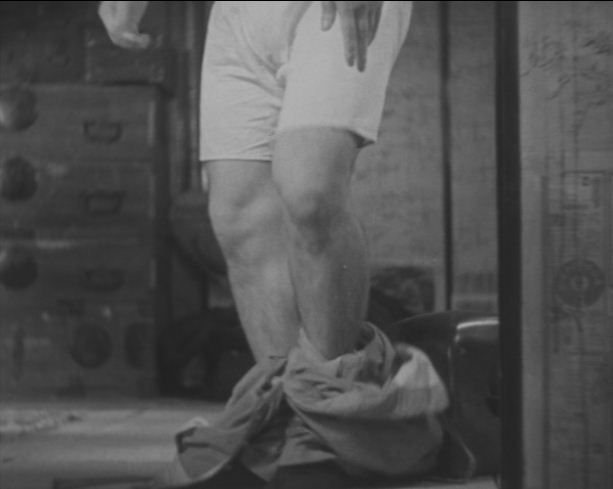
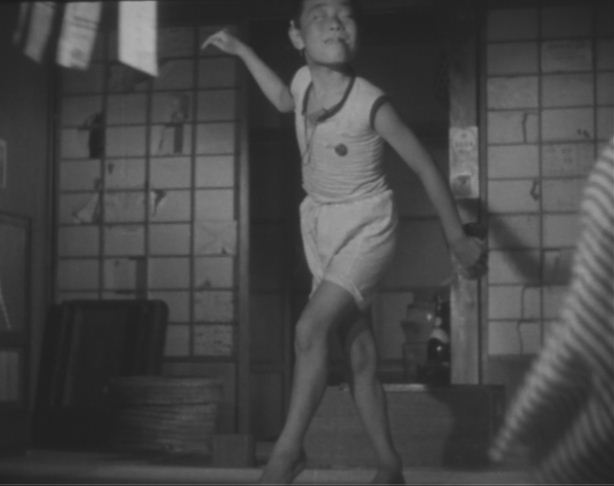
The concluding minutes of Passing Fancy ramp up the melodrama and the emotions to a stirring climax that I could describe here but I won’t. A summary of the plot only goes so far in capturing the moods that Ozu evokes, and might even persuade some readers to think that the movie isn’t worth their time. My recommendation is that anyone new to Ozu stick with the traditional route of entry, through Tokyo Story or Late Spring, then on to other later works, and then tread backwards in time to see if the old silents deliver enough charm to win your own Passing Fancy. Personally, I really enjoy seeing Ozu’s depiction of this cluttered, cramped, workingman’s environment that he focused on before moving to the more prosperous middle class environs of his later films. The elements so familiar from the films of his full maturity – the pillow shots of industrial and natural landscapes, the low camera angles, the elliptical leaps in time and space – are already settling into place here, but not as formally refined and therefore even more fresh and vibrant. Check out Passing Fancy or any of the other silent family comedies in this set. And if you like them, file your report with us here at CriterionCast. Send us a self-addressed, stamped envelope and $5.00 for handling fees, and we’ll send you your official Stage 3 Ozu-phile Badge. Be the first on your block to get one!


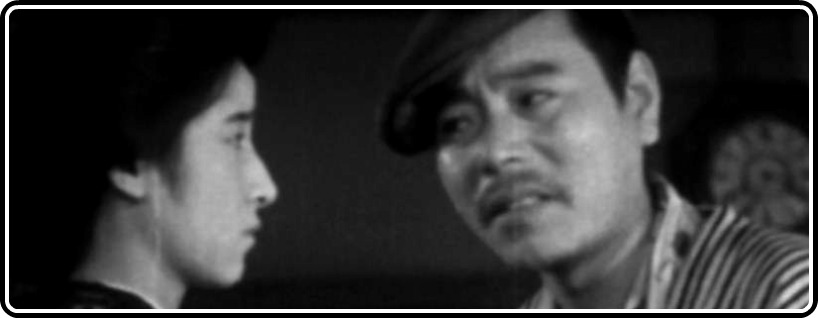
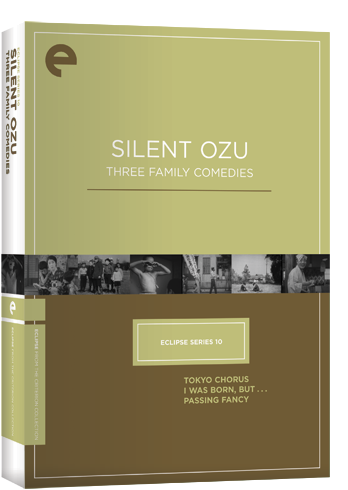


![Bergman Island (The Criterion Collection) [Blu-ray]](https://criterioncast.com/wp-content/uploads/2022/11/bergman-island-the-criterion-collection-blu-ray-400x496.jpg)
![This Is Not a Burial, It’s a Resurrection (The Criterion Collection) [Blu-ray]](https://criterioncast.com/wp-content/uploads/2022/11/this-is-not-a-burial-its-a-resurrection-the-criterion-collection-blu-ray-400x496.jpg)
![Lars von Trier's Europe Trilogy (The Criterion Collection) [The Element of Crime/Epidemic/Europa] [Blu-ray]](https://criterioncast.com/wp-content/uploads/2022/11/lars-von-triers-europe-trilogy-the-criterion-collection-the-element-of-400x496.jpg)
![Imitation of Life (The Criterion Collection) [Blu-ray]](https://criterioncast.com/wp-content/uploads/2022/11/imitation-of-life-the-criterion-collection-blu-ray-400x496.jpg)
![The Adventures of Baron Munchausen (The Criterion Collection) [4K UHD]](https://criterioncast.com/wp-content/uploads/2022/11/the-adventures-of-baron-munchausen-the-criterion-collection-4k-uhd-400x496.jpg)
![Cooley High [Criterion Collection] [Blu-ray] [1975]](https://criterioncast.com/wp-content/uploads/2022/11/cooley-high-criterion-collection-blu-ray-1975-400x496.jpg)
1 comment